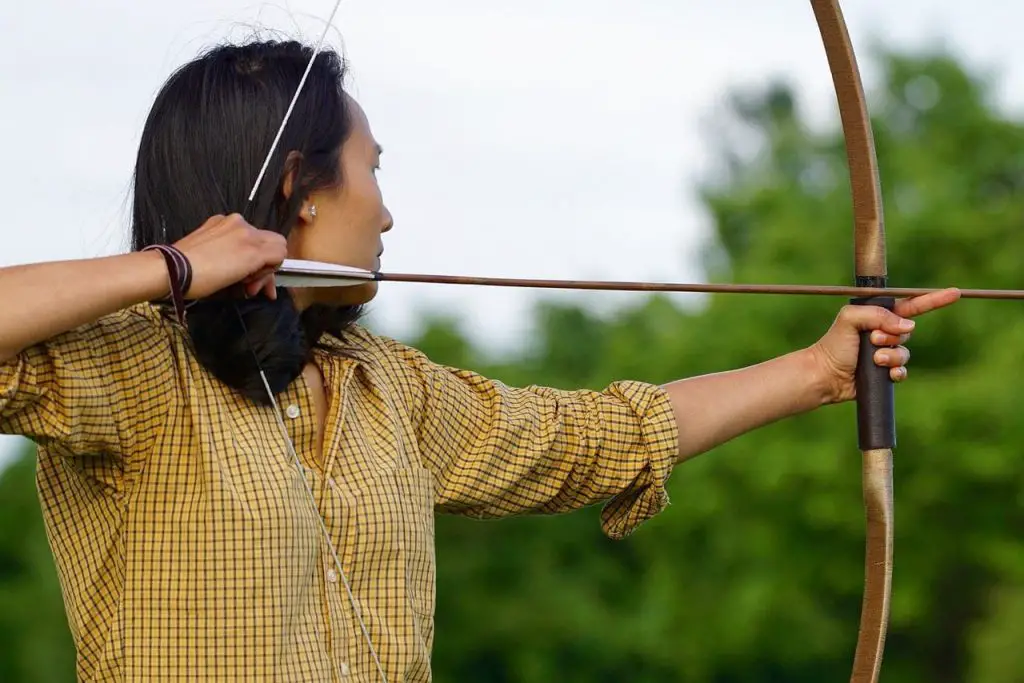When it comes to choosing a draw weight, you should not choose a 70 pound bow. This weight is too heavy and will cause the bow to overbowl. Some archery shops only carry bows with this draw weight. Choosing the correct draw weight will maximize the performance of your equipment. If you are unsure of the best starting weight, you can use the Armspan/2.5 method.
Recurve bows with 40+ pound draw weight
| Bear Archery Grizzly Recurve Bow |
Recurve bows typically have a draw weight range of fifteen to seventy pounds. Recurve bows typically are used for field and 3D archery, where the emphasis is on accuracy and good shooting form. In contrast, compound bows are prohibited in Olympic competitions, so recurve bows are the only option. In addition, they have lower draw weights than compound bows.
In comparison, elite recurve archers shoot bows weighing nearly 50 pounds on the fingers, making them capable of shooting more than 70 pounds. It is not easy to generalize, but elite bowhunters have been described as pulling the weight of an average bulldog. For the rest of us, the weight of a 70 lb recurve bow is more manageable.
As mentioned, determining the draw weight of a recurve bow is important because it will increase your shooting distance and reduce muscle fatigue. It is also important to make sure that you’re not shooting a recurve bow with a heavier draw weight than you’re comfortable with, as this will make shooting more difficult. In addition, heavier poundage may result in poorer accuracy and bad habits, which you don’t want to acquire.
Older compound bows don’t perform as well when cranked down 10 pounds
| Genesis Gen-X Compound Bow |
A better tip is to start with the flagship models of compound bows. While older compound bows don’t perform as well when cranked down 10 pounds, newer models are designed to compensate for this weakness. You should consider your physical size and age when choosing a compound bow. You should try to shoot at least 20 pounds heavier than you normally would when you are at your most comfortable and most relaxed draw weight.
While choosing a compound bow for your child, make sure to consider their age and skill level. Children grow out of using bright colors soon, so try to purchase a bow in a more subtle color, rather than a bright and vibrant one. If your child is only starting to shoot, consider buying a youth compound bow, as these tend to be cheaper. However, keep in mind that a youth compound bow should be durable.
Armspan/2.5 method
Using the Armspan/2.5 method to draw arrows or bows is an accurate way to determine the length of your bow. To measure your arm-span, stand with your arms extended, measure from the tip of your middle finger to the tip of your index finger. Then divide that length by 2.5 to get the approximate draw length for your height. Note that some people claim that your arm-span equals your height.
Another method is to measure the length of your arm. To do this, stand with your back to a wall with your palms facing out. Stretch your arms out to form a “T” shape with your fingers extended. Measure the length from fingertip to fingertip in inches. Divide that measurement by 2.5 to get your approximate draw length. For an example, your arm span is approximately four inches shorter than your fingertip.
Choosing a good starting weight for bow drawing
Choosing a good draw weight for bow drawing for beginners depends on a few factors, including your age, sex, weight, and body type. Beginners are encouraged to start with a lighter weight so that they can develop proper form and avoid tire-out, but this may not be possible for everyone. You can also consider your physical condition and the type of bow you want to use. Beginners should look for a bow that falls within the lighter end of that range.
The first step in increasing your draw weight is to determine the range of the weight you can safely draw. If you shoot less than twenty arrows per session, you can go up by 10 pounds. Once you reach 80-100 arrows, you can go up by four pounds. When you are above 80 pounds, you should increase your draw weight by two pounds. It is important to adjust the draw weight slowly so that you can develop your technique.




